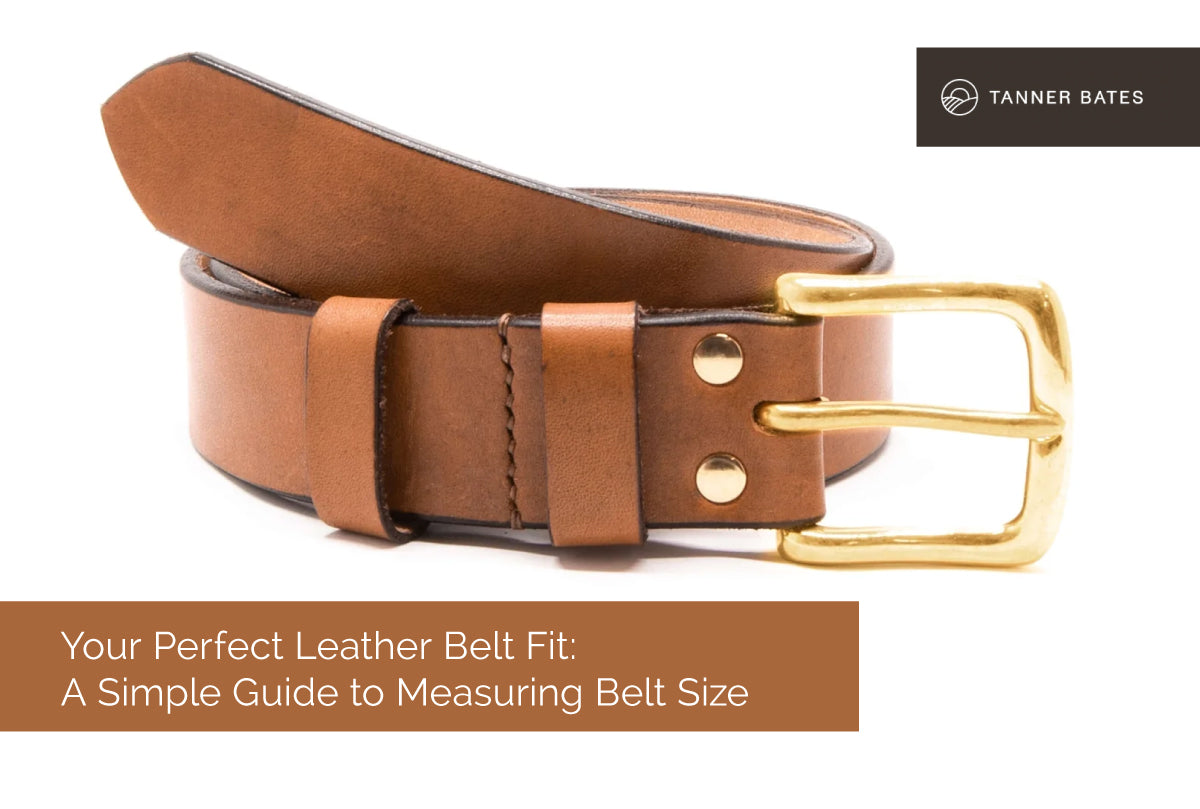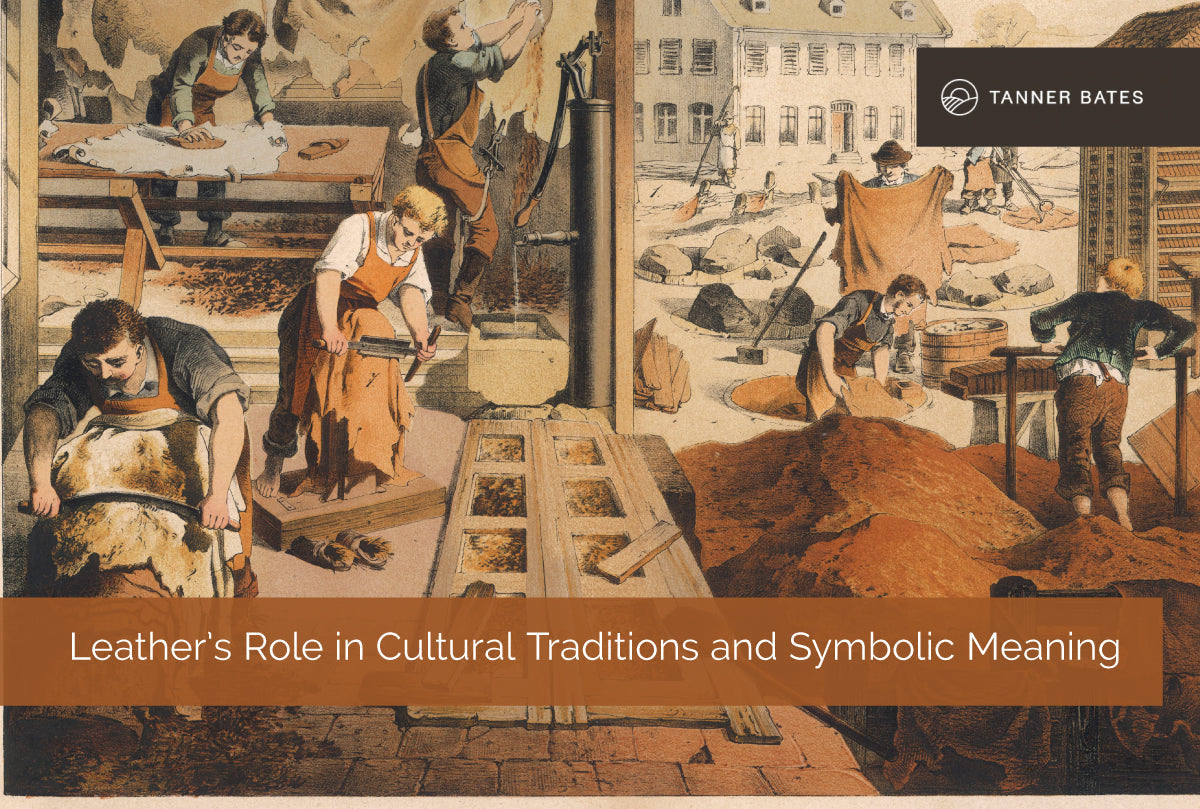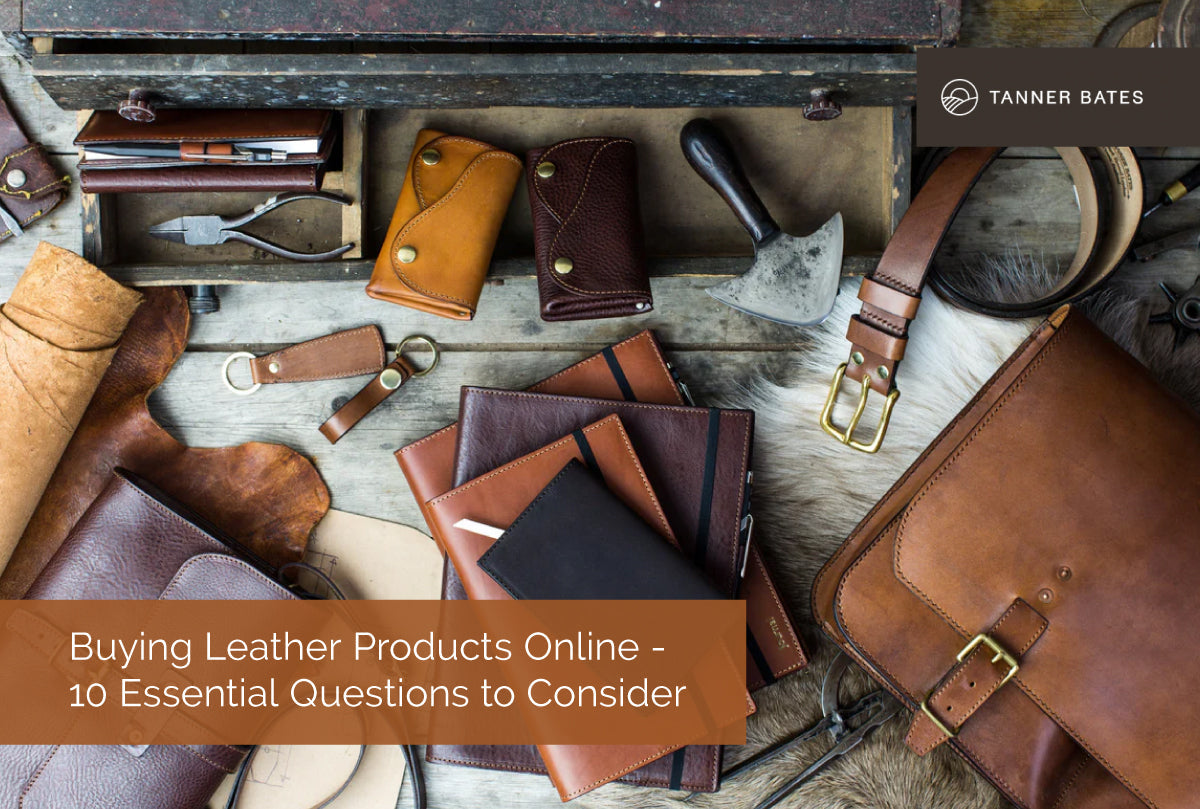
Understanding Leather Drying Times: How Long Does It Really Take?

Understanding Leather Drying Times: How Long Does It Really Take?
Imagine this: you've just invested in a beautiful, handcrafted leather bag from Tanner Bates. You love the way it looks, feels, and smells. But one day, you get caught in a sudden downpour. Now, you're wondering how long it will take for your prized leather bag to dry and, more importantly, how to do it without ruining its quality.
At Tanner Bates, we understand the relationship you build with your leather goods. Each piece tells a story and ages gracefully over time. That's why we've put together this comprehensive guide to help you understand leather drying times, best practices for drying, and how to maintain your leather items so they continue to look stunning for years to come.
Understanding Different Types of Leather
Before diving into drying times, it's essential to understand the various types of leather and their characteristics.
Full Grain Vegetable-Tanned Leather
Full grain vegetable-tanned leather is the highest quality leather available. It retains the complete grain of the hide with all its natural imperfections and markings. The vegetable tanning process uses natural tannins extracted from bark, leaves, and other plant materials, making it environmentally friendly. This leather develops a rich patina over time, adding to its aesthetic appeal and value.
Chrome-Tanned Leather
Chrome-tanned leather is tanned using chromium salts, resulting in a softer and more pliable leather. It is less expensive and faster to produce than vegetable-tanned leather, but it does not develop the same patina.
Corrected Grain Leather
Corrected grain leather has been sanded and buffed to remove imperfections, then coated with a finish. It is more uniform in appearance but lacks the natural beauty and aging characteristics of full grain leather.

Genuine Leather
Often used as a marketing term, genuine leather refers to lower-quality leather made from the layers of the hide that remain after the top has been split off. It is less durable and lacks the distinctive qualities of higher-grade leather.
Factors Affecting Leather Drying Times
Several factors influence how long leather takes to dry. Understanding these can help you care for your leather items more effectively.
Type of Leather
Different types of leather dry at different rates. Full grain vegetable-tanned leather, with its natural density and texture, tends to dry slower than more processed leather like chrome-tanned leather.
Thickness of the Leather
Thicker leather absorbs more moisture and, therefore, takes longer to dry. A thick leather belt, for instance, will take more time than a thinner leather wallet.
Environmental Conditions
Humidity, temperature, and airflow significantly impact drying times. Leather dries faster in warm, dry conditions with good air circulation. High humidity and low temperatures can slow down the drying process.
Amount of Moisture Absorbed
The level of moisture the leather has absorbed will also determine drying times. A heavily soaked leather item will naturally take longer to dry than one that is only slightly damp.
Typical Drying Times for Different Types of Leather
On average, full grain vegetable-tanned leather takes about 24 to 48 hours to dry under ideal conditions. Chrome-tanned leather, due to its different tanning process, may dry faster, typically within 12 to 24 hours. Corrected grain and genuine leathers can vary, but they generally fall within similar drying times as chrome-tanned leather.

Proper Techniques for Drying Leather
Drying leather correctly is crucial to avoid damage and maintain its quality. Here are some best practices:
Natural Air Drying vs. Artificial Drying Methods
Natural air drying is the safest method for drying leather. Avoid using artificial heat sources like hairdryers or heaters, as these can cause the leather to become brittle and crack.
Ideal Environmental Conditions
Dry your leather in a well-ventilated area away from direct sunlight. Too much sun exposure can lead to discolouration and drying out of the leather.
Positioning and Care During Drying
Lay the leather flat or hang it in its natural shape to prevent deformation. Avoid placing heavy objects on the leather during drying, as this can cause indentations or stretching.

How to Tell When Leather is Fully Dry
Determining whether your leather is fully dry is essential to prevent over-drying or under-drying. Fully dried leather should feel dry to the touch but still retain some flexibility. It should not feel cold or damp. Over-dried leather can become stiff and brittle, while under-dried leather may still contain moisture that can lead to mould or mildew.
A good tip is to check the moisture content by gently pressing on the leather. If it feels spongy or leaves a mark, it likely needs more drying time. When in doubt, give it additional time to ensure it is thoroughly dry.
Maintaining Leather After Drying
Once your leather is fully dry, proper maintenance is key to preserving its quality and enhancing its patina. Conditioning your leather regularly helps to keep it moisturised and prevents it from drying out and cracking. Use high-quality leather conditioners specifically designed for full grain vegetable-tanned leather.
Regular cleaning with a damp cloth can remove surface dirt and keep your leather looking its best. Avoid using harsh chemicals or abrasive materials that can damage the leather. Storing your leather items properly, away from direct sunlight and excessive humidity, will also help maintain their condition.
Common Mistakes to Avoid When Drying Leather
There are several common mistakes people make when drying leather and understanding these can help you avoid them:
- Using Direct Heat Sources: Placing leather near heaters or using a hairdryer can cause the leather to dry too quickly and become brittle.
- Excessive Sun Exposure: While sunlight can help speed up drying, too much can cause discolouration and damage.
- Not Checking for Full Dryness: Putting leather away before it is fully dry can lead to mould and mildew growth.
- Ignoring Conditioning: Failing to condition leather after drying can result in it becoming dry and cracked over time.
By avoiding these mistakes, you can ensure your leather items remain in excellent condition.
Conclusion
Understanding the drying times and proper care techniques for leather is essential for maintaining its beauty and longevity. Whether you have full grain vegetable-tanned leather, chrome-tanned leather, or any other type, following the guidelines outlined in this blog will help ensure your leather items dry correctly and continue to look their best.
At Tanner Bates, we are passionate about creating high-quality leather products that develop a unique patina over time, reflecting the journey of each piece. Explore our range of leather products and learn more about caring for your leather at Tanner Bates. Embrace the timeless elegance and unmatched quality that only Tanner Bates can offer, and ensure your leather items remain cherished possessions for years to come.
FAQs About Leather Drying Times
1. How long does full grain vegetable-tanned leather take to dry?
Full grain vegetable-tanned leather typically takes about 24 to 48 hours to dry under ideal conditions. Factors such as humidity, temperature, and thickness can affect this drying time.
2. Can I speed up the drying process by using a hairdryer or heater?
No, using direct heat sources like hairdryers or heaters can cause the leather to become brittle and crack. It is best to let leather air dry naturally in a well-ventilated area.
3. How can I tell if my leather is fully dry?
Fully dried leather should feel dry to the touch but still flexible. It should not feel cold or damp. Press gently on the leather; if it feels spongy or leaves a mark, it likely needs more drying time.
4. What are the best conditions for drying leather?
The best conditions for drying leather are in a well-ventilated area away from direct sunlight. Ideal environmental conditions include moderate temperatures and low humidity.
5. How should I care for my leather after it has dried?
After drying, condition your leather regularly with high-quality leather conditioners to keep it moisturised and prevent it from drying out and cracking. Clean with a damp cloth and avoid harsh chemicals.
6. What common mistakes should I avoid when drying leather?
Common mistakes to avoid include using direct heat sources, exposing leather to excessive sunlight, not ensuring the leather is fully dry before storing it, and neglecting to condition the leather after drying.
Also in Knowledge base

Your Perfect Leather Belt Fit: A Simple Guide to Measuring Belt Size
Ever bought a belt online only to discover it's either cutting into your waist or sliding down your hips?
The frustration of getting belt sizing wrong is real. Too tight, and you're uncomfortable all day. Too loose, and you're constantly adjusting. There is actually a simple rule that takes the guesswork out of measuring belt size entirely.

Leather’s Role in Cultural Traditions and Symbolic Meaning
What if a single material could embody resilience, artistry, and cultural identity all at once?
Leather does just that. Its story spans millennia, touching every corner of human civilisation. From the armour of ancient warriors to modern luxury fashion, leather has been more than just a material - it’s a symbol of strength, sophistication, and heritage.

Buying Leather Products Online - 10 Essential Questions to Consider
Shopping for leather products online can be exciting, but it’s not always easy to know if you’re making the right choice. Leather goods often come with a price tag that reflects their quality and craftsmanship, so it’s important to make an informed decision.
